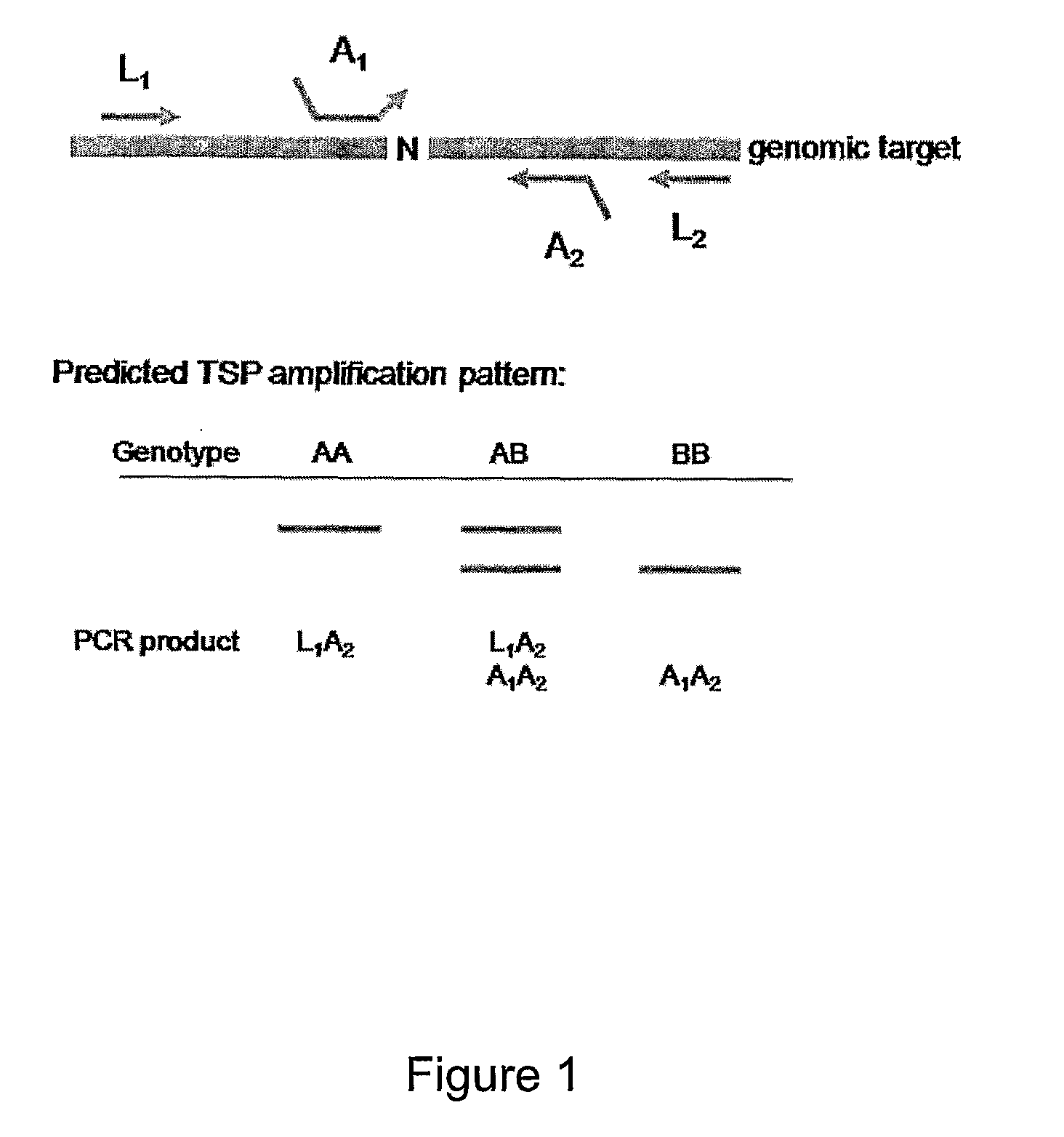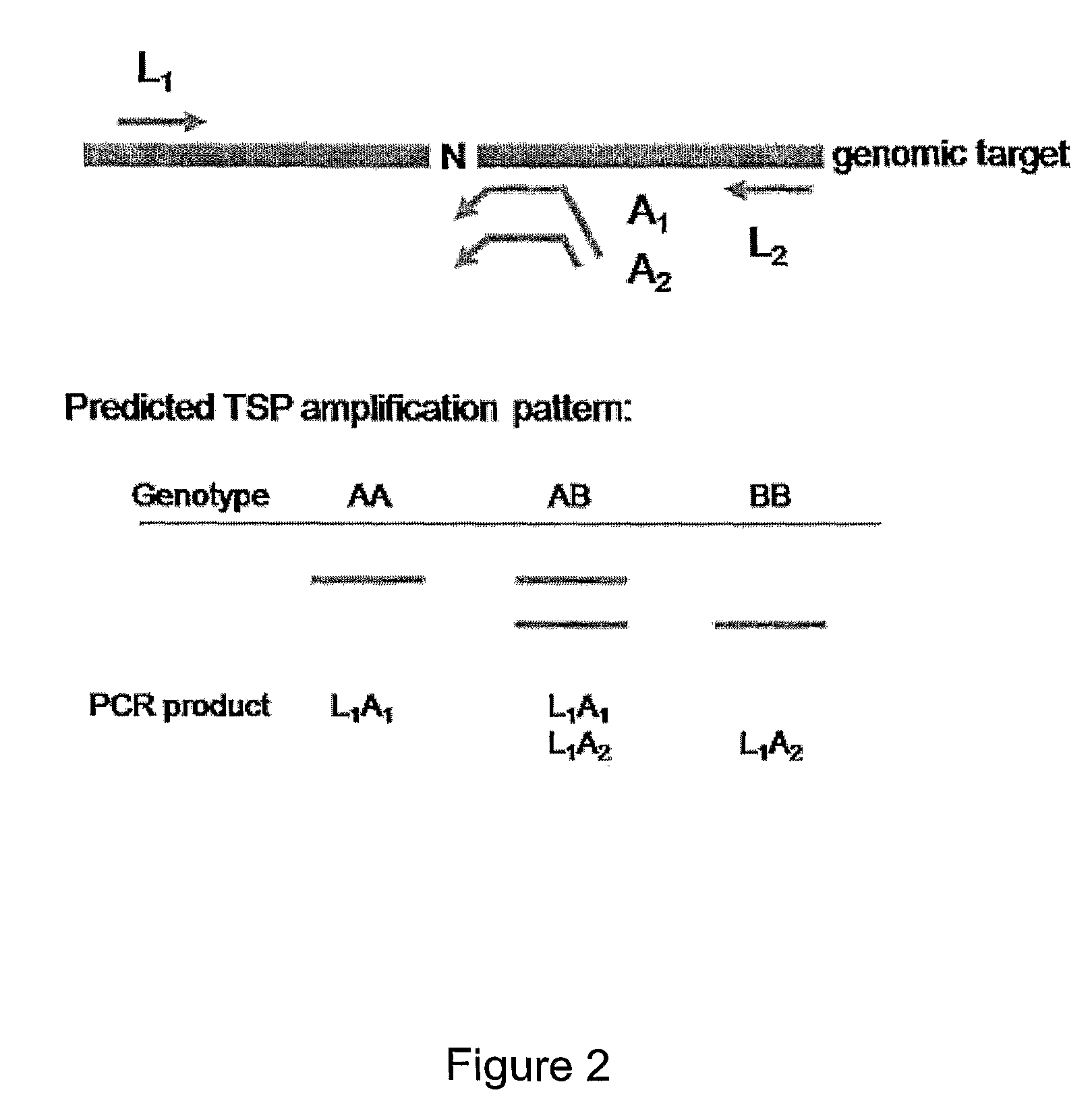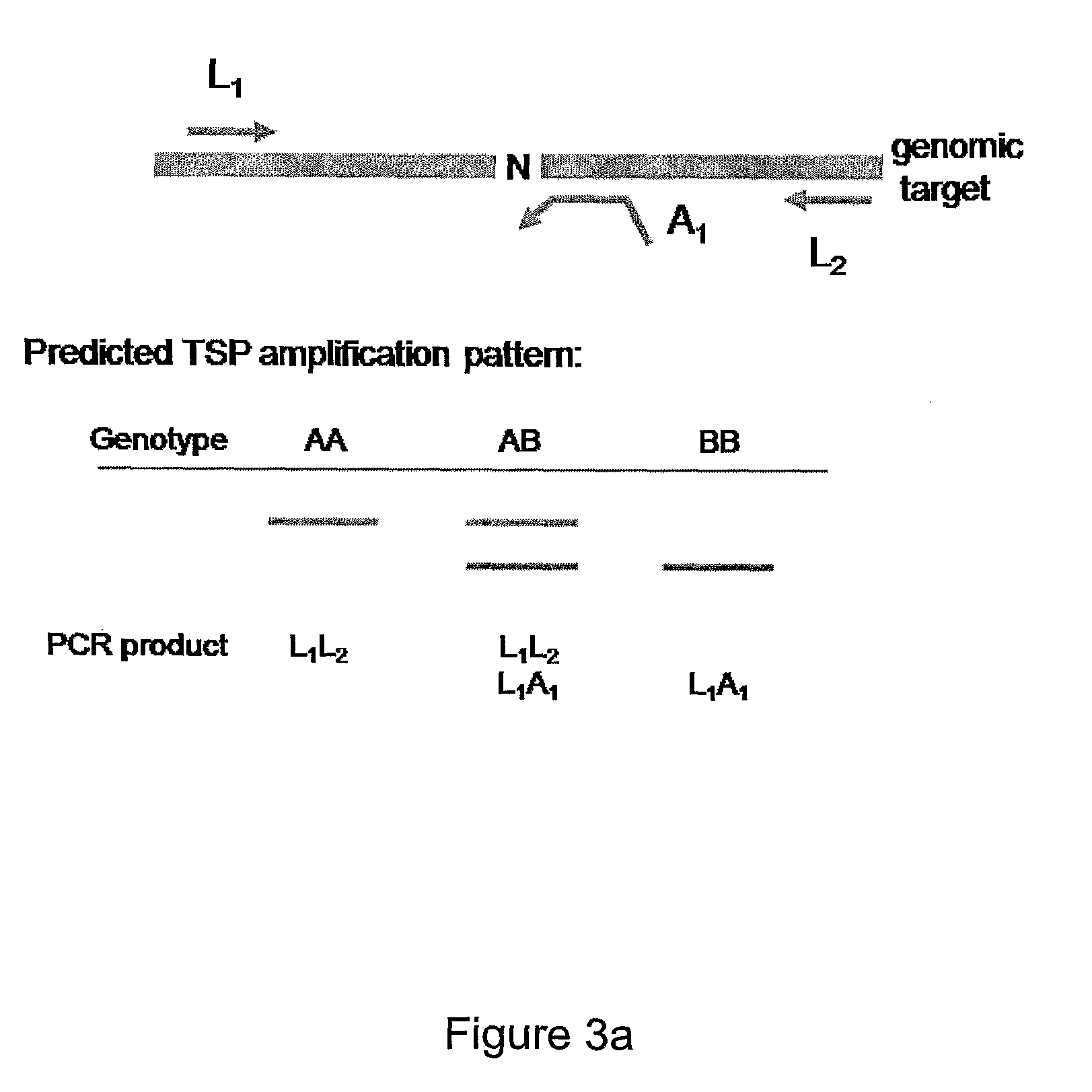Method of amplifying nucleic acid
a nucleic acid and primer technology, applied in the field of polymorphism or mutation detection, can solve the problems of failure to detect the amplification product produced using this primer, and achieve the effects of reducing costs and contamination risks, simple and inexpensive methods, and being convenient to us
- Summary
- Abstract
- Description
- Claims
- Application Information
AI Technical Summary
Benefits of technology
Problems solved by technology
Method used
Image
Examples
example 1
Allelic Discrimination by Differential Product Size Using a Pair of Allele Specific Primers Designed to Opposite DNA Strands
[0232]FIG. 1 depicts a method of the present invention for detecting an allele in which allele specificity is conferred by an allele specific (AS) primer that anneals to a locus of interest such that a nucleotide complementary to the allele is positioned at or near the 3′ end of the primer. Accordingly, in the presence of an allele of interest (allele B in FIG. 1) the 3′ end of the primer will anneal to the nucleic acid, however in the presence of an alternate allele (allele A in FIG. 1) the 3′ end of the primer will not anneal or will anneal at a reduced level compared to the level when allele B is present.
[0233]As depicted in FIG. 1, the assay is performed using both locus specific (LS) primers (L1 and L2) and allele specific (AS) primers (A1 and A2). The locus specific primers anneal to nucleic acid in the sample at a first temperature (e.g., from about 63° ...
example 2
Allelic Discrimination by Differential Product Size Using a Pair of Allele Specific Primers Designed to the Same DNA Strand
[0238]FIG. 2 depicts a method of the present invention for detecting an allele in which specificity for allele A or allele B is conferred by allele specific primers designed to anneal to the same DNA strand. LS and AS primers are produced essentially as described in Example 1, and assays are performed essentially as described in Example 1. In the assay depicted in FIG. 2 both AS primers (A1 and A2 in FIG. 2) are designed to anneal to the target locus such that a nucleotide complementary to one allele is positioned at or near the 3′ end of one primer (e.g., A1), and a nucleotide complementary to the other allele is positioned at or near the 3′ end of the other primer (e.g., A2). The AS primers differ by having 5′ non-complementary tails of different length.
[0239]A single reaction is performed for genotype determination using LS primers L1 and L2, and AS primers A...
example 3
Allelic Discrimination by Differential Product Size Using a Single AS Primer
[0240]In the assay depicted in FIGS. 3a and 3b, allele specificity is conferred by the AS reverse primer. LS and AS primers are produced essentially as described in Example 1, and assays are performed essentially as described in Example 1. The number of reactions required for genotype determination will be influenced by the size of the PCR fragment amplified by the LS primer pair.
[0241]The assay depicted in FIG. 3a is an example in which a PCR fragment amplified by the LS primer pair is relatively short, for example less than about 500-bp. In this case, a single reaction is performed for genotype determination using the LS primers L1 and L2 and AS reverse primer A1. In the assay depicted in FIG. 3a allele specificity is conferred by the AS primer that anneals to a locus of interest such that a nucleotide complementary to the an allele (e.g., the B allele) is positioned at or near the 3′ end of the primer. Th...
PUM
| Property | Measurement | Unit |
|---|---|---|
| Tm | aaaaa | aaaaa |
| Tm | aaaaa | aaaaa |
| Tm | aaaaa | aaaaa |
Abstract
Description
Claims
Application Information
 Login to View More
Login to View More - R&D
- Intellectual Property
- Life Sciences
- Materials
- Tech Scout
- Unparalleled Data Quality
- Higher Quality Content
- 60% Fewer Hallucinations
Browse by: Latest US Patents, China's latest patents, Technical Efficacy Thesaurus, Application Domain, Technology Topic, Popular Technical Reports.
© 2025 PatSnap. All rights reserved.Legal|Privacy policy|Modern Slavery Act Transparency Statement|Sitemap|About US| Contact US: help@patsnap.com



